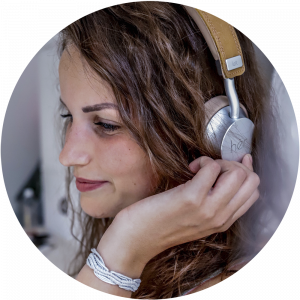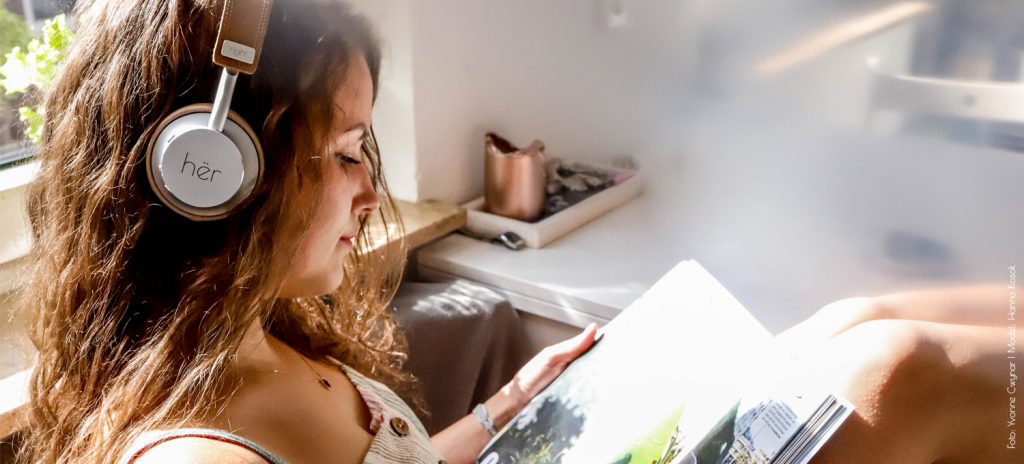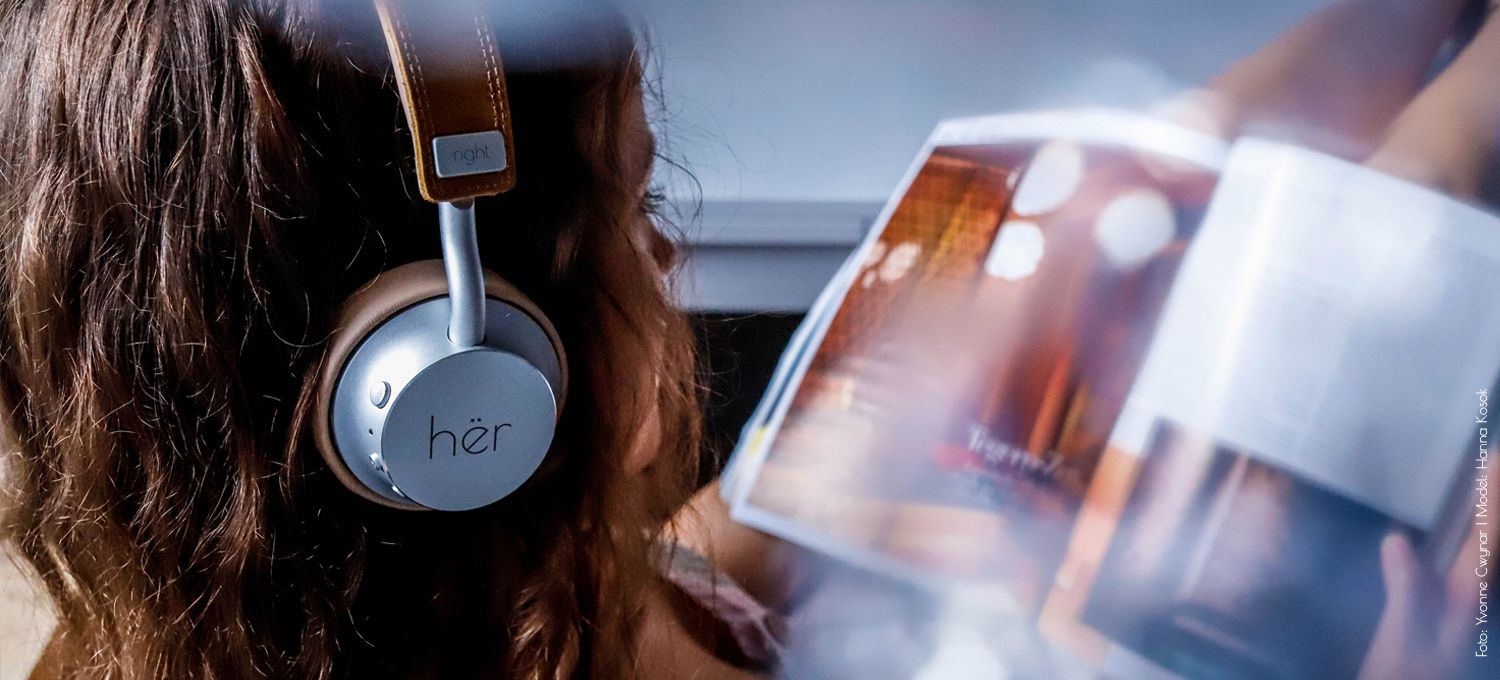Just lying on the couch or in the park, listening to music: pure relaxation. But there are other tips, methods and approaches that you can use to be even more relaxed with our headphones. We’d like to introduce you to a few of them:
 And one more thing: hër headphones fit perfectly and are easy on your auditory canals, because they sit on your ear and not inside your ear. The on-ear design lets air circulate around your ear.
And one more thing: hër headphones fit perfectly and are easy on your auditory canals, because they sit on your ear and not inside your ear. The on-ear design lets air circulate around your ear.
And: the Bluetooth transmission comes into its own, of course. You don’t have any wires attached to your ear that could prevent you from relaxing.
Sleeping with headphones
Whether you like audio books to help you get to sleep, or listening to music or soft background noises, you can help yourself relax while you sleep. In fact, it’s quite obvious, but have you ever tried a longer spell of sleeping with an acoustic aid, and have you noticed the positive effects that you can achieve by doing that?
The volume should not exceed that of normal speech. Anything under 60 decibels is generally very well tolerated by our ears, even over longer periods. And if you are worried about relying on how it feels to your ears, you can measure the volume with certain apps for iOS and Android, simply by holding the smartphone microphone to the headphone’s earcup.
Get to sleep more easily with music
You can’t imagine sleeping with headphones on? Well you can still benefit from the relaxing effect of wearing headphones: listen to music for 45 minutes before you go to bed (60-80 BPM – which in classical music translates to Andante, Adagio, Largo), and this will help you to lower your heart rate, relax your whole body, and then finally get to sleep more easily.
And of course: the more you like the music, the sooner the relaxing effect will take effect. Concentrating on the music, instead of all the thoughts and worries that preoccupy you, will help you to let go and be more relaxed.

Relaxing sounds
Ambient sounds – in other words background noises – can help you to calm down and drop into an acoustically relaxing situation. Spotify has suitable playlists, and on the noisli.com website you can put your own soundtrack together:
- Sounds of the forest, by day or by night
- Rustling leaves and crackling flames
- Soft rain and a babbling brook
- Murmurs and background noises in a café
- Lapping waves and the sound of a boat
- Binaural beats
Our brain can do amazing things. Binaural beats are different sounds for left and right ear, and they create a flow effect within your head. The frequency of the sounds can influence the different brainwaves, and this can create different effects. You should try it!
Directed meditation with headphones
If you specifically want to relax, practise mindfulness, or simply take some time out, then directed meditation is worth a try. Apps such as Calm, Headspace and 7Mind (also available in German) are a great place to start. There are also plenty of offers in the podcast and YouTube environment, and they could help you get into meditation.
Learning while you sleep
It’s not just a way of relaxing, but it can also be a way to use your relaxed state for the purpose of learning something. But you must ensure that you choose what you want to learn very carefully: if you are a musician, you can learn a new piece of music, or remember new words and single items of vocabulary in an unconscious state, and this can happen while you are asleep. has shown, however, that complex information probably cannot be processed in the brain this way. But of course it’s worth a try for some things.
Acupressure points in the ear
There’s one thing that you can try, but it must be before or after you use your hër headphones, and not while wearing them, and that is acupressure. The headphones cover up the acupressure points on your ear, including the so-called anti-stress or Shen-Men point. A gentle, circular massage with your fingertips or with a cotton bud calms both body and spirit, helping you to dissolve tension. You can find out more about this in this blog.
What’s your favourite way of using headphones? Please tell us about it!


